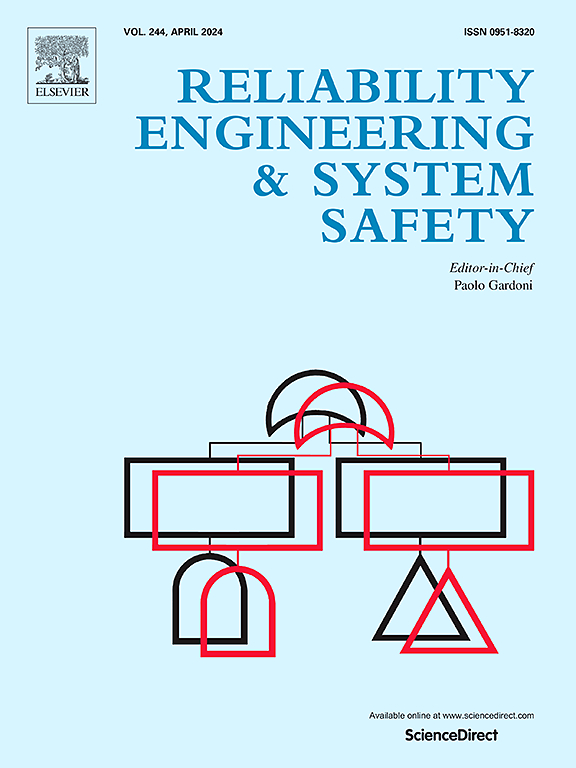Assessing the vulnerability of power network accounting for demand diversity among urban functional zones
IF 9.4
1区 工程技术
Q1 ENGINEERING, INDUSTRIAL
引用次数: 0
Abstract
This paper proposes a method for assessing power network vulnerability considering demand diversity among urban functional zones. By simulating various demand entities across urban functional zones based on Point of Interest (POI) data, a power demand model is developed based on load density indicators. Additionally, a power network model is developed, and cascading failure mechanisms are defined to represent the dynamic behavior of the power network. A comprehensive vulnerability assessment model is then built, considering both structural and functional aspects. Finally, a case study is conducted to assess the power network's vulnerability under various demand settings and failure scenarios. The case study reveals that node failures affect not only neighboring nodes but also non-adjacent ones. Also, structural vulnerability (SV) and functional vulnerability (FV) reflect different aspects of power network performance, and SV is generally higher than FV. As expected, both SV and FV are found to increase with rising demand, and the vulnerability growth trends vary across different demand growth scenarios. Based on the influence of demand growth on system vulnerability, power network nodes are categorized into three types: inherently vulnerable, demand-sensitive and stable. Finally, this study evaluates the effectiveness of energy storage deployment and edge capacity expansion strategies in mitigating power network vulnerability under demand growth scenarios.
考虑城市功能区需求差异的电网脆弱性评估
本文提出了一种考虑城市功能区需求差异性的电网脆弱性评估方法。基于兴趣点(POI)数据,模拟城市功能区的各种需求实体,建立了基于负荷密度指标的电力需求模型。此外,建立了电网模型,并定义了级联故障机制来表征电网的动态行为。在此基础上,建立了综合考虑结构和功能两方面的脆弱性评估模型。最后,通过案例分析,评估了不同需求设置和故障场景下电网的脆弱性。实例分析表明,节点故障不仅会影响相邻节点,也会影响非相邻节点。此外,结构脆弱性(SV)和功能脆弱性(FV)反映了电网性能的不同方面,SV一般高于FV。正如预期的那样,SV和FV都随着需求的增加而增加,并且脆弱性的增长趋势在不同的需求增长情景中有所不同。根据需求增长对系统脆弱性的影响,将电网节点分为固有脆弱性、需求敏感型和稳定型三种类型。最后,本研究评估了在需求增长情景下,储能部署和边缘容量扩张策略在缓解电网脆弱性方面的有效性。
本文章由计算机程序翻译,如有差异,请以英文原文为准。
求助全文
约1分钟内获得全文
求助全文
来源期刊

Reliability Engineering & System Safety
管理科学-工程:工业
CiteScore
15.20
自引率
39.50%
发文量
621
审稿时长
67 days
期刊介绍:
Elsevier publishes Reliability Engineering & System Safety in association with the European Safety and Reliability Association and the Safety Engineering and Risk Analysis Division. The international journal is devoted to developing and applying methods to enhance the safety and reliability of complex technological systems, like nuclear power plants, chemical plants, hazardous waste facilities, space systems, offshore and maritime systems, transportation systems, constructed infrastructure, and manufacturing plants. The journal normally publishes only articles that involve the analysis of substantive problems related to the reliability of complex systems or present techniques and/or theoretical results that have a discernable relationship to the solution of such problems. An important aim is to balance academic material and practical applications.
 求助内容:
求助内容: 应助结果提醒方式:
应助结果提醒方式:


